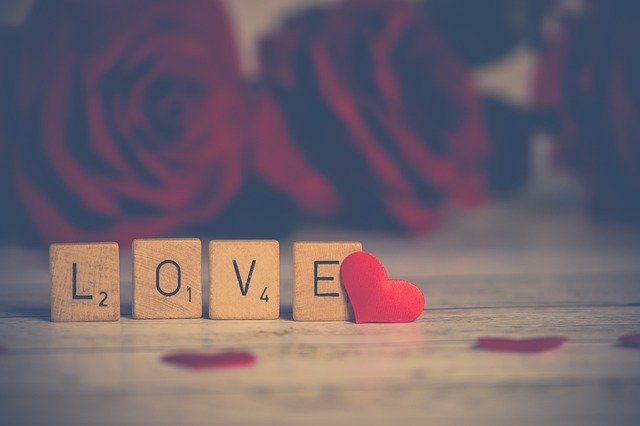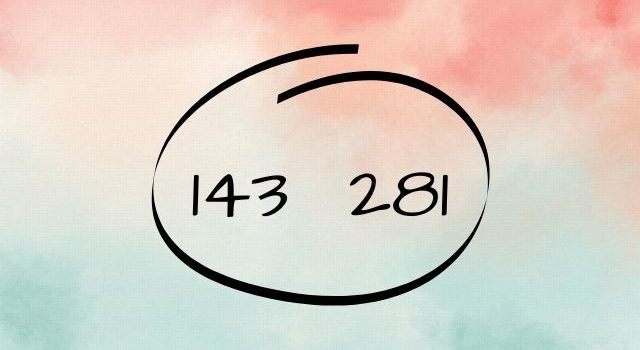Last Updated on February 3, 2023 by Team CrazyJackz
Texting has become our way of life and it is even more popular with those in a romantic relationship. Finding a romantic approach to express your love to your partner, is a special challenge that you will undoubtedly want to master.
We have all seen people asking their partner to marry them by getting down on one knee in front of others. But what if you thought of an unconventional way to convey your feelings? Not only will your partner find it nearly impossible to reject you, but they’ll also cherish the memory for the rest of her life.
Texting using code numbers is always going to be a cherished way to express one’s emotions. One among such numbers is the 143 and 281. So, what does 143 and 281 mean in texting? What does the code 281 mean from someone? Is it a reply to your 143 Or is it something else? Well, let’s find out..
What does 143 Mean? The History of 143..

The number 143 refers to the number of letters in each word of the phrase: I (1), love (4), you (3). According to legend, the shorthand originated at the Minot’s Ledge lighthouse off the coast of Cohasset, Massachusetts, in the early 1900s. As a result of a suggestion that all lighthouses utilise number flash sequences, the lighthouse altered its flash pattern in 1895, which marks the start of the tale. It appears that the sequence of one quick flash, four flashes, and then three flashes was chosen at random.
Winfield Scott Thompson, a new assistant lighthouse keeper, started working at the Minot’s Ledge lighthouse in 1915. His family could see the lighthouse’s flare at night because they resided on a nearby island. It is said that Winfield Thompson’s wife Mary Thompson told their children that the I Love You flash was their father’s way of expressing his love for them from the other side of the ocean. The amount of letters in each word of the sentence “I love you” was represented by a different flash. This story gained a lot of traction, earning the Minot’s Ledge lighthouse the nickname “I Love You Lighthouse.”
The 143 code persisted, regardless of whether it originated at the lighthouse or was created separately later in the century. The late 1980s and early 1990s saw a rise in the use of pagers. Only a little amount of text could be stored on each device, and some did not support it. In order to get around this, individuals started using codes like 411 for information and 911 for emergencies. For “I love you,” they also used 143.
143 was very popular in the early days of text messaging and online chat rooms and continues to be used till date. But what does 281 mean?
What does 143 and 281 mean? The Meaning of ‘281’ Reply from Someone

If a girl responds with 281 in response to a boy saying 143, which may be interpreted as “I love you,” then 281 may represent two words, eight letters, and one meaning.
The reply was “loves you,” since 281 stands for 2 words, 8 letters, and 1 meaning. You’ll see that “loves you” consists of two words and eight letters. Explicitly, the word “loves you” only has one meaning: the person is feeling something toward you. With a ‘281’ reply (to the boy’s 143) the girl also wants to communicate to the boy that she really likes him in return. She can only express it numerically because she is unable to use words, but it only has one meaning: love.
Instead of responding to the partner with 281, Some individuals also prefer to respond with 381. The numbers 281 and 381 are remarkably similar to one another. 381 would represent “I love you” if 281 stands for “loves you.” Because 3 is for three words, 8 is for eight letters, and 1 is for one meaning, 381 is “I love you.” In contrast to 281, 381 clearly indicates that the speaker really likes the other person. If the girl responded “381” to the boy, then it is clear that she wanted to express her admiration for him, and it is likely that she wanted more from him than just to be a friend.
Takeaway
Are you the type of person who finds meaning in numbers? Do you ever notice when people communicate with one another using codes? Everybody has at some point in their lives encountered a Code 143 or 281. Everyone has experienced a relationship where they fell more quickly and deeply than their partner and dispensed with the dreaded (and premature) “I love you.”
Stating “I love you” too soon in a fresh relationship is also extended to be called Code 143. While it is a strange custom, and it would undoubtedly be difficult to express your love for someone in this way, 143 and 281 are here to stay.
- What Is Eminem’s Real Eye Color? Is It Blue Or Hazel? - April 17, 2023
- Is Spitting In Someone’s Mouth A Soul Tie? - April 4, 2023
- What Is Trickle Truth and How to Deal with it After Infidelity? - April 4, 2023

